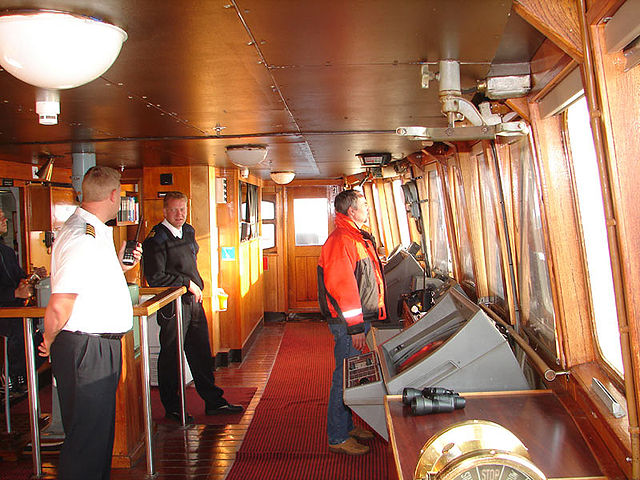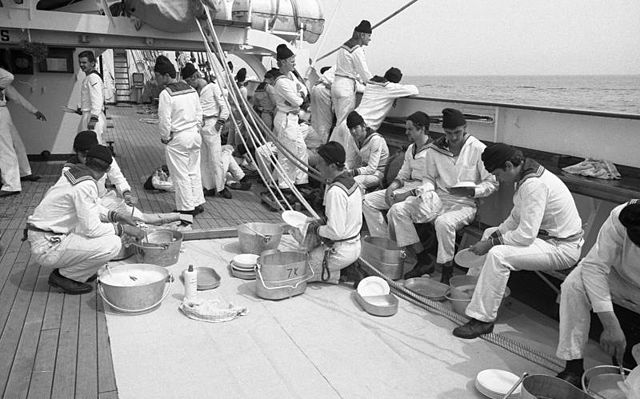United States Merchant Marine
The United States Merchant Marine is an organization composed of United States civilian mariners and U.S. civilian and federally owned merchant vessels. Both the civilian mariners and the merchant vessels are managed by a combination of the government and private sectors, and engage in commerce or transportation of goods and services in and out of the navigable waters of the United States. The Merchant Marine primarily transports domestic and international cargo and passengers during peacetime, and operate and maintain deep-sea merchant ships, tugboats, towboats, ferries, dredges, excursion vessels, charter boats and other waterborne craft on the oceans, the Great Lakes, rivers, canals, harbors, and other waterways. In times of war, the Merchant Marine can be an auxiliary to the United States Navy, and can be called upon to deliver military personnel and materiel for the military.
United States Merchant Marine
Naval battle off Halifax between the American privateer ship Jack crewed by U.S. Merchant Mariners and HMS Observer by night on 29 May 1782.
Torpedoed merchant ship in the Atlantic Ocean during WWII.
A U.S. Flag Ship
A sailor, seaman, mariner, or seafarer is a person who works aboard a watercraft as part of its crew, and may work in any one of a number of different fields that are related to the operation and maintenance of a ship.
Three types of mariners, seen here in the wheelhouse of a ship: a master, able seaman, and harbour pilot.
An able seaman stands iceberg lookout on the bow of the freighter USNS Southern Cross during a re-supply mission to McMurdo Station, Antarctica; c. 1981.
Portrait of a sailor taken on board the French aviso Ardent, 1857
Sailors on a ship








